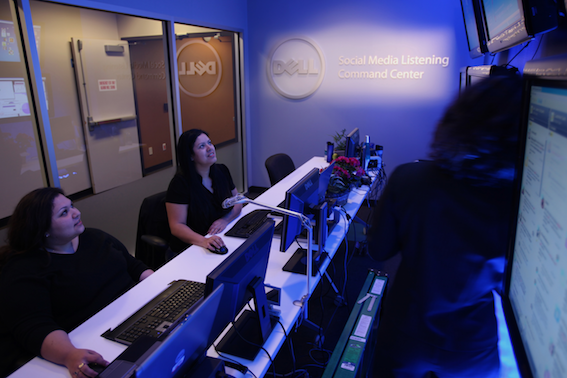By adaptive - March 13th, 2013
An interview with Liz Brown Bullock, Director of Social Media at Dell. We discuss how the company train other teams on social media best practice, how social is embedded at their company - and more.
 Liz is a marketer, storyteller and artist that enjoys solving business challenges with creative ideas to deliver enviable results. She is the Director of Social Media and Community at Dell focused on embedding social media into the organization and activating connected employees to deepen customer relationships and brand advocacy.
Liz is a marketer, storyteller and artist that enjoys solving business challenges with creative ideas to deliver enviable results. She is the Director of Social Media and Community at Dell focused on embedding social media into the organization and activating connected employees to deepen customer relationships and brand advocacy.
[Q] How did your organisation approach the mapping of your enterprise to identify where social media should reside in the corporate structure? And how this would deliver an integrated approach to social media activity?
[Q] What is your advice to organisations that are beginning to map their own corporate structure with the view to embedding social media activity within their enterprise?
- Start with listening to your customers. What are customers saying about your brand? What are the needs your customers have expressed?
- As you have identified customer needs, tie them to your business objectives.
- Create one single business strategy process. There is no separate social business strategy, but one strategy with one set of business objectives and outcomes. Map your social initiatives to your business objectives. For example, if your business objective is to understand customer pain points, then you need to be monitoring social conversations. If your business objective is to impact brand reputation, then you need to foster advocacy.
- When mapping your social media programs to your business strategy, be platform agnostic, so your social strategy stays in place as social platforms come and go.
- Build a governance model to identify and manage your social media presences. Of course, your social media presences need to be mapped to your listening efforts and where you customers are having conversations about your brand.
- Write a social media policy for all employees and clearly state expectations for employees within the space. Note, think of creative ways to communicate and share the social media policy across your employees. Unfortunately, most employees will not read a 2 page legal document.
- Train your employees on the policy, strategy, and best practices.
- Once your employees are trained, ask them to take action on behalf of your brand. You will be pleasantly surprised at the positive engagement, excitement and actions your employees have in regards to connecting with customers online.
[Q] Clearly it is important to create a unified face from multiple departments when using social media. How has your company developed its organisational plan to ensure that each department’s social media activity is coordinated?
[Q] Can you outline a recent social media campaign and explain how this was coordinated across your business?
[Q] Has your company developed a comprehensive social media policy that all departments contributed to and now follow during each new campaign? What are its main components?
- Protect customer’s information.
- Be transparent & disclose.
- Follow the law, follow the code.
- Be responsible.
- Be nice, have fun and connect.
[Q] Are there any specific tools you employ that help your business manage its social media activity across multiple departments?

[Q] How do you see the management and development of social media in your company evolving over the next few years?
Next Reads
June 2014, New York
Become a social business: For superior marketing response, sharper corporate decision-making, enhanced innovation and a happier, more loyal customer
Brochure Programme